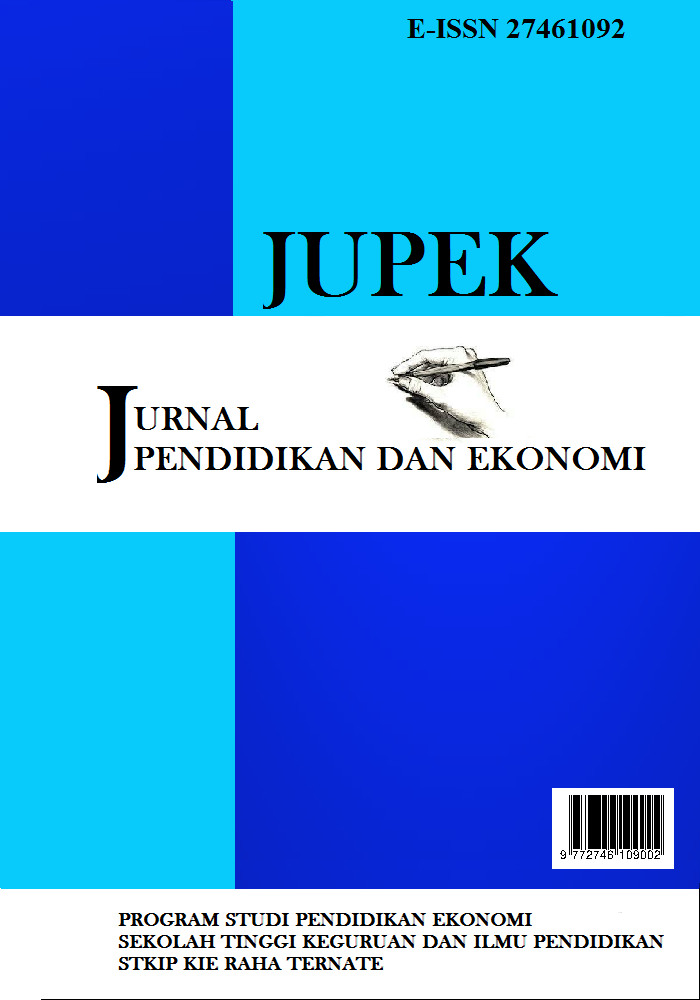APPLICATION OF COOPERATIVE LEARNING MODEL TO IMPROVE STUDENTS' LEARNING OUTCOMES IN THE LITHOSPHERE MATERIAL IN GEOGRAPHY CLASS X OF STATE HIGH SCHOOL 34 SOUTH HALMAHERA
Abstract
This study aims to determine the improvement of learning outcomes of class X students in geography subjects using the Pair Exchange learning model (cooperative learning) at SMA Negeri 34 Halmahera Selatan. The type of research used in this study is Classroom Action Research (CAR), using a qualitative research approach. Based on the results of the discussion in cycle I, it shows that on average students have not been able to solve problems on the lithosphere material, with the application of the pair exchange learning model (cooperative learning) as many as 4 students or 12.90% of students are in the sufficient category while 6 or 19.36% are in the less category and 21 or 67.75% are in the very less category. So it can be seen that the learning outcomes of students in Class X SMA Negeri 34 Halmahera Selatan are still very lacking. Meanwhile, in Cycle II there has been an increase, namely 5 students or 16.12% got the very good category, 8 students or 25.8% got the good category, 14 students or 45.16% got the sufficient category, and 4 students or 12.90% got the less category. So the researcher concluded that the application of the pair exchange learning model on the basic competency (KD) of the Lithosphere in Geography subjects can improve student learning outcomes in Class X of SMA Negeri 34 Halmahera Selatan.
Downloads
Copyright (c) 2025 Jurnal Pendidikan dan Ekonomi (JUPEK)

This work is licensed under a Creative Commons Attribution 4.0 International License.





